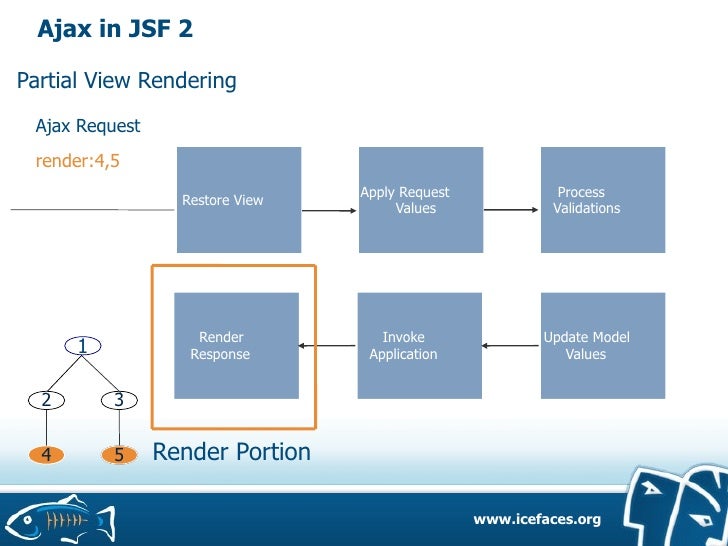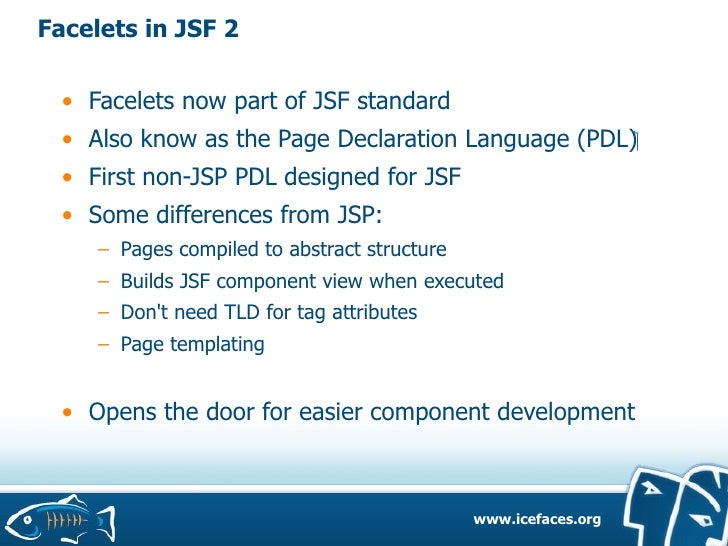
Among several hundred small repairs and larger updates, JSF 2.3 deprecates managed bean annotations in favor of CDI, which I'll introduce later in this tutorial. Released in March 2017, JSF 2.3 was intentionally designed to modernize JSF. While the schedule for future development is unclear, JSF 2.3 gives developers plenty to work with while we wait. One of these is PrimeFaces, which we explore in this tutorial. The JSF specification has also spawned a wealth of frameworks and libraries, which have kept pace with recent client-side improvements. Still, JavaServer Faces remains the Java standard, especially for large-scale, Java enterprise development. Long popular, JSF has recently faced competition from Java-compatible web frameworks, including client-side JavaScript frameworks. Examples include new features in JSF 2.3, and we'll use PrimeFaces for our component library. Simple examples introduce JSF's MVC architecture, event model, and component library. This article presents a snapshot of JSF's approach to component-based UI development for Java web applications. The key idea to a framework like JSF is to encapsulate (or wrap) client-side technologies like HTML, CSS, and JavaScript, allowing developers to build web interfaces without much interaction with these technologies.
#Jsf icefaces full#
JSF components are backed by Java objects, which are independent of the HTML and have the full range of Java abilities, including accessing remote APIs and databases.

Unlike JSP, which is essentially an HTML page imbued with server-side capabilities, JSF is an XML document that represents formal components in a logical tree. Like JavaServer Pages (JSP), JSF allows access to server-side data and logic. That set! You can now run your JSF application.JavaServer Faces (JSF) is the Java standard technology for building component-based, event-oriented web interfaces.
#Jsf icefaces plus#
go to lib folder and add the library you added in step 7 to through plus button and choose library files.

Under WEB-INF you will find two folder, classes and lib. then change the name of library, and add jars mention above from attach classes button on the right side.Ĩ- Now we gonna add jars to default artifact, from the same window go to Artifacts from the left panel.

You will see confirmation dialog press Ok. you will see the below picture.įrom the left panel, you will see library option.
#Jsf icefaces how to#
Now i will show you how to add this jars, right click on module then press on open Module Setting. If you wanna use ICEfaces advanced component add this jar: ICEfaces Core Component with needed jars with jboss el: If you wanna use advanced library add thisįinally change the html header and body to JSF component,Ĩ- now we gonna add the necessary library for ICEfaces, i will list the library needed for ICEfaces. through right click then refactor then rename.ħ- remove the directive, and add this html header.

change the extention of the index file to xhtml. The project will be like the below picture.Ĥ- you should create lib folder under web –> WEB-INFĥ- you need to add some context parameters and listener in web.xmlĦ- we will make our senario with index page, by default index.jsp generate it when you create the project. usually Mojarra shipped with ICEfaces library. I prefer to download which JSF RI you wanna used and create custom library for it, select user library then press on create button and specified JSF RI. When you select JSF they ask you to download JSF RI or create custom library for JSF RI. Here we will select JSF framework and application server.
#Jsf icefaces code#
After specifying the source code folder you will move to most important window, in this window you will specify which framework and which web server you gonna use. see the below picture for more illustrationģ- the other dialog to specified the source folder, keep it as default. I will walk with you step by step with pictures to be clear for all.ġ- you should create new project from file menu, you will see the below window.Ģ- then you will see the other dialog to fill project information, we just will fill project name and keep other fields with default value. After this article you will can create and work with ICEfaces inside Intellij IDE.


 0 kommentar(er)
0 kommentar(er)
